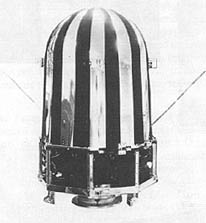This article needs additional citations for verification .(April 2024) |
A mercury swivel commutator is a connector mainly used in animal experimentation to prevent the twisting of electrode wires attached to moving animals. [1]
This article needs additional citations for verification .(April 2024) |
A mercury swivel commutator is a connector mainly used in animal experimentation to prevent the twisting of electrode wires attached to moving animals. [1]
Mercury swivel commutators are typically used in electrophysiological experiments on head-free[ clarification needed ] or moving animals. Whereas electrical recordings from stationary, head-fixed animals can be done with electrodes attached directly with wires to the amplifier and recording setup on a stereotaxtic rig, in freely moving animals a commutator is needed to prevent twisting of the wires attaching the electrode, which moves and rotates with the animal's head (often multiple revolutions in one direction), to the amplifier/recorder, which is in a fixed position.
A mercury swivel commutator is a type of electrical commutator. These traditionally use slip rings for coupling, which can introduce electrical noise into the connection [2] as the contact points slide over the surface of the slip-rings, causing microscopic bumps which result in uneven conductivity. To reduce the electrical noise the contact points need to be pressed against the slip rings with greater force. This leads to resistance when moving the ring, as well as a higher rate of wear. Using liquid mercury as the conductor reduces commutator noise and friction, enabling commutator use for small weaker animals. [2]
Many machinery manufacturers have switched to using mercury swivel commutators instead of slip rings. For example, packaging machines have moving parts that are heated to seal packages after they are filled. Slip rings are traditionally used but these can introduce electrical noise and signal degradation into temperature sensing circuit, whereas mercury swivel commutators are more reliable and accurate. Multiple channel mercury swivel commutators also make it possible to pass the power and the temperature signals through the same rotating electrical connector, which has the benefit of minimizing the number of connector parts needed.

An electric motor is an electrical machine that converts electrical energy into mechanical energy. Most electric motors operate through the interaction between the motor's magnetic field and electric current in a wire winding to generate force in the form of torque applied on the motor's shaft. An electric generator is mechanically identical to an electric motor, but operates in reverse, converting mechanical energy into electrical energy.

Components of an electrical circuit are electrically connected if an electric current can run between them through an electrical conductor. An electrical connector is an electromechanical device used to create an electrical connection between parts of an electrical circuit, or between different electrical circuits, thereby joining them into a larger circuit.

Headphones are a pair of small loudspeaker drivers worn on or around the head over a user's ears. They are electroacoustic transducers, which convert an electrical signal to a corresponding sound. Headphones let a single user listen to an audio source privately, in contrast to a loudspeaker, which emits sound into the open air for anyone nearby to hear. Headphones are also known as earphones or, colloquially, cans. Circumaural and supra-aural headphones use a band over the top of the head to hold the drivers in place. Another type, known as earbuds or earpieces, consists of individual units that plug into the user's ear canal. A third type are bone conduction headphones, which typically wrap around the back of the head and rest in front of the ear canal, leaving the ear canal open. In the context of telecommunication, a headset is a combination of a headphone and microphone.

A commutator is a rotary electrical switch in certain types of electric motors and electrical generators that periodically reverses the current direction between the rotor and the external circuit. It consists of a cylinder composed of multiple metal contact segments on the rotating armature of the machine. Two or more electrical contacts called "brushes" made of a soft conductive material like carbon press against the commutator, making sliding contact with successive segments of the commutator as it rotates. The windings on the armature are connected to the commutator segments.
Balanced audio is a method of interconnecting audio equipment using balanced interfaces. This type of connection is very important in sound recording and production because it allows the use of long cables while reducing susceptibility to external noise caused by electromagnetic interference. The balanced interface guarantees that induced noise appears as common-mode voltages at the receiver which can be rejected by a differential device.
This is an index of articles relating to electronics and electricity or natural electricity and things that run on electricity and things that use or conduct electricity.

A mercury switch is an electrical switch that opens and closes a circuit when a small amount of the liquid metal mercury connects metal electrodes to close the circuit. There are several different basic designs but they all share the common design strength of non-eroding switch contacts.

The anti-twister or antitwister mechanism is a method of connecting a flexible link between two objects, one of which is rotating with respect to the other, in a way that prevents the link from becoming twisted. The link could be an electrical cable or a flexible conduit.

A slip ring is an electromechanical device that allows the transmission of power and electrical signals from a stationary to a rotating structure. A slip ring can be used in any electromechanical system that requires rotation while transmitting power or signals. It can improve mechanical performance, simplify system operation and eliminate damage-prone wires dangling from movable joints.

A rotary converter is a type of electrical machine which acts as a mechanical rectifier, inverter or frequency converter.

An electronic component is any basic discrete electronic device or physical entity part of an electronic system used to affect electrons or their associated fields. Electronic components are mostly industrial products, available in a singular form and are not to be confused with electrical elements, which are conceptual abstractions representing idealized electronic components and elements. A datasheet for an electronic component is a technical document that provides detailed information about the component's specifications, characteristics, and performance.

A brush or carbon brush is an electrical contact, often made from specially prepared carbon, which conducts current between stationary and rotating parts of an electrical machine. Typical applications include electric motors, alternators and electric generators. The lifespan of a carbon brush depends on how much the motor is used, and how much power is put through the motor.

A field coil is an electromagnet used to generate a magnetic field in an electro-magnetic machine, typically a rotating electrical machine such as a motor or generator. It consists of a coil of wire through which a current flows.

An AC motor is an electric motor driven by an alternating current (AC). The AC motor commonly consists of two basic parts, an outside stator having coils supplied with alternating current to produce a rotating magnetic field, and an inside rotor attached to the output shaft producing a second rotating magnetic field. The rotor magnetic field may be produced by permanent magnets, reluctance saliency, or DC or AC electrical windings.

The Orbiting Frog Otolith (OFO) was a NASA space program which sent two bullfrogs into orbit on November 9, 1970, for the study of weightlessness. The name, derived through common use, was a functional description of the biological experiment carried by the satellite. Otolith referred to the frog's inner ear balance mechanism.

A dynamo is an electrical generator that creates direct current using a commutator. Dynamos were the first electrical generators capable of delivering power for industry, and the foundation upon which many other later electric-power conversion devices were based, including the electric motor, the alternating-current alternator, and the rotary converter.
A Bioamplifier is an electrophysiological device, a variation of the instrumentation amplifier, used to gather and increase the signal integrity of physiologic electrical activity for output to various sources. It may be an independent unit, or integrated into the electrodes.

The neurotrophic electrode is an intracortical device designed to read the electrical signals that the brain uses to process information. It consists of a small, hollow glass cone attached to several electrically conductive gold wires. The term neurotrophic means "relating to the nutrition and maintenance of nerve tissue" and the device gets its name from the fact that it is coated with Matrigel and nerve growth factor to encourage the expansion of neurites through its tip. It was invented by neurologist Dr. Philip Kennedy and was successfully implanted for the first time in a human patient in 1996 by neurosurgeon Roy Bakay.
This article provides information on the following six methods of producing electric power.
This glossary of electrical and electronics engineering is a list of definitions of terms and concepts related specifically to electrical engineering and electronics engineering. For terms related to engineering in general, see Glossary of engineering.